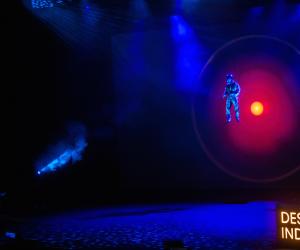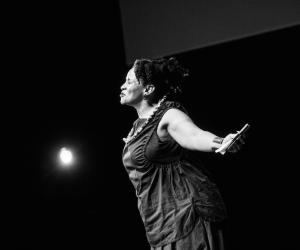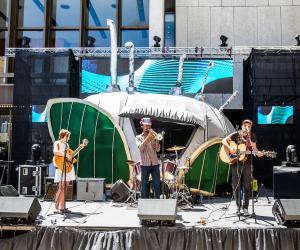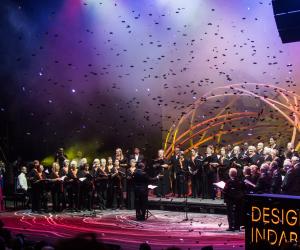-
Li Edelkoort Design & Lifestyle Trend Forecast Seminar 2017
World-renowned forecaster of future fashion and design trends Li Edelkoort is back at Design Indaba Festival 2017 in Cape Town and Johannesburg to present her annual trend seminar.
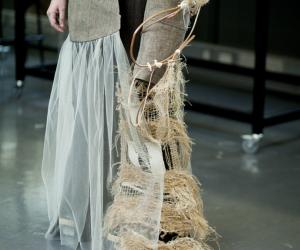
For her 2017 seminar at Design Indaba Festival, Dutch trend forecaster Li Edelkoort will present a full-day seminar on fashion, textiles, bio-engineering, home and interior, and design empathy.
The programme will also include a free morning session aimed at design students, which will introduce a new Master of Fine Arts in Textiles launching in 2018.
-
SponsorsEvent Information
Event Information
Venue: Book Now- Saturday, 25 February, 2017 - 10:00 to 15:00
- Saturday, 4 March, 2017 - 10:00 to 15:00
Ticket InformationThe trend seminar is being held in Johannesburg on Saturday 25 February 2017 and in Cape Town at Artscape on Saturday 4 March 2017.
Tickets: R650
Student tickets: R550
Conference discount (20%): R520
Simulcast discount (10%): R585 - Saturday, 25 February, 2017 -
Designed by Lidewij Edelkoort for Parsons School of Design, a new MFA program in Textiles will launch in New York City on September 2018.
We invite all future potential students and interested faculty from South Africa to join us for a free informative meeting from 10AM to 11AM.
Please RSVP to Willem Schenk (executive assistant to Lidewij Edelkoort), schenkw@newschool.edu
The world is in flux and culture responds with fragments of ideas, sketches of innovative forms and creative utopian concepts. We are looking forward to ambiguous and rather unfathomable times, tasting moments of promises, and experiencing instants of doubt, knowing that much is wrong in a society witnessing the decline of its institutions. We are living a bipolar moment where we can go from a jubilant personal experience to dismal public aggression, from an absolute high when encountering the outdoors to a depressing down living in the outskirts of gentrified cities, a transversal construction of time and space.
In bio-engineering, insects in are helping diverse industries with new endeavours; from butterfly wings that are studied to understand structural colouration versus pigmentation, to spider silks dreamed up as bulletproof vests and Kevlar-strength textiles or termite mounds examined by architects in order to rethink sustainable buildings. Evolution and innovation are now walking hand in hand. Activewear is one such industry taking its cues from the insect realm, inspired by the social structures of their societies as much as by insects’ physical attributes to imagine the most futuristic of forms, colours and materials. Insects are made up of a head, thorax and abdomen, the same three areas of interest in today’s active archetypes: focusing on the mind, heart and core. Added to this are their multiple articulations to ply, train and expand the body, their agility when taking flight or their acute “sensurround” vision; since we too seek to be evermore dexterous and perceptive of our terrain. Active materials will look through the microscope at insects, in search of yet-to-be-devised textile structures. Not to mention the plethora of signaletic brights, iridescent sheens, matte metallics and powdered blushes that can each transform colour on eco-tech or performance materials, giving them fresh and surprising depth, sometimes glowing in the dark like their bioluminescent cousins. Merging biometrics with athletic style in a metamorphic quest for tomorrow’s key active hybrids.
Recent philosophy has rekindled the discussion about the material mind. This movement is called New Materialism and it advocates the vibrancy of matter, something that animists and shamans have believed for centuries: that matter has its own force and possesses a mind of its own, that all other physical and mental processes are animated by the raw power of these substances – the result being matter upon matter, materializing the strong bonds people need to survive in the encroaching virtual web, which is jeopardizing our perception of tactility and human interaction. Young designers are certainly leading this conversation with their inventions; using new machines to serve their purposes, reprogramming antiquated robots to construct their designs, hacking 3D printers to boost their ceramic forms and repurposing old mechanical looms for contemporary creation. Suddenly the machine is no longer the antithesis and enemy of making but the handmaid of the designer: enabling, embellishing and advancing creative production processes. Man and machine finally merge and become one.
Confronted with the adversary of human designed disasters and manmade political scandals paralysing our planet and countries, people’s only recourse becomes faith, an almost forgotten principle. To have faith in the spirit of survival, to have faith in creative forces able to rebuild society, an intrinsic need to believe in the human race, especially in moments of bewildering despair. We need to trust our instincts to build a better future, full with genuine love towards ourselves and others, even those at fault. Being able to forgive, to understand, to comprehend, to taste the fear in others. To pledge an awareness of altruism, script a gospel of compassion. Desire needs to be embedded in empathy. Recognizing their inspirations and yielding to innate creative urges, artists and designers will build up the needed confidence to create new matter, landscape other horizons, design decorative objects, weave unusual fibers, draw non-existent flowers, created with the deep conviction that aesthetic expressions will resonate with others and are able to heal and care for people. Faith grows from future generations, professing their reliance on inner strength, convinced to reroute society the way they see it; convivial, cooperative, concerting, concerned, a society where truth remains an important quality and flexible forms of constancy help to compose the rhythm of existence.

